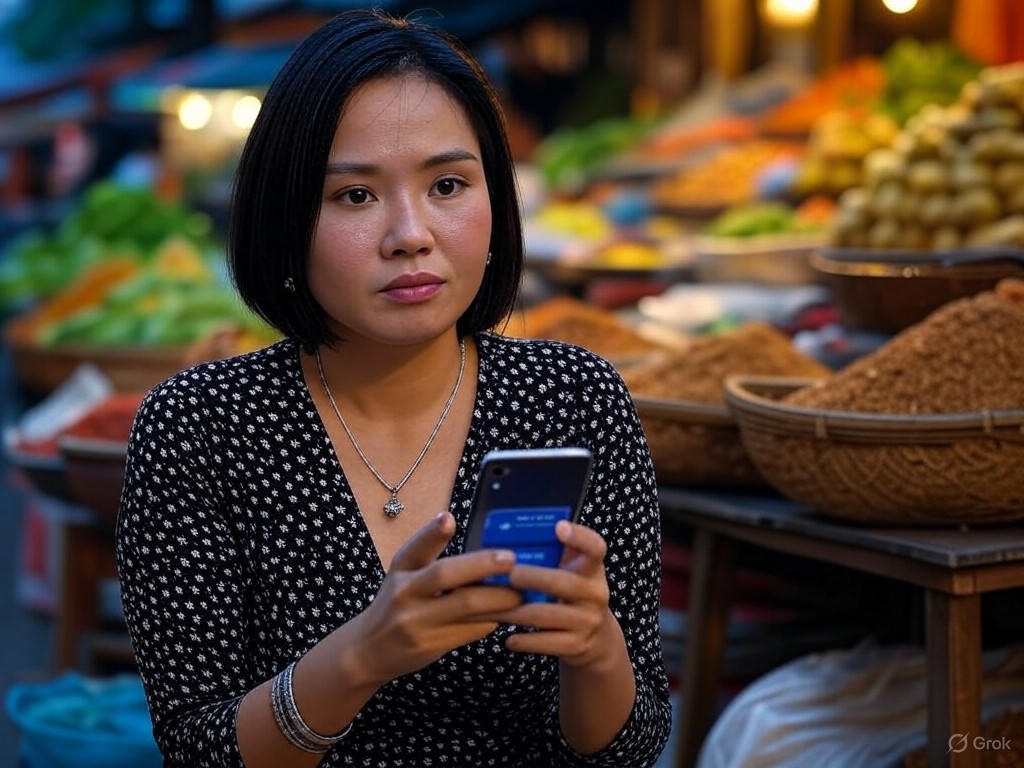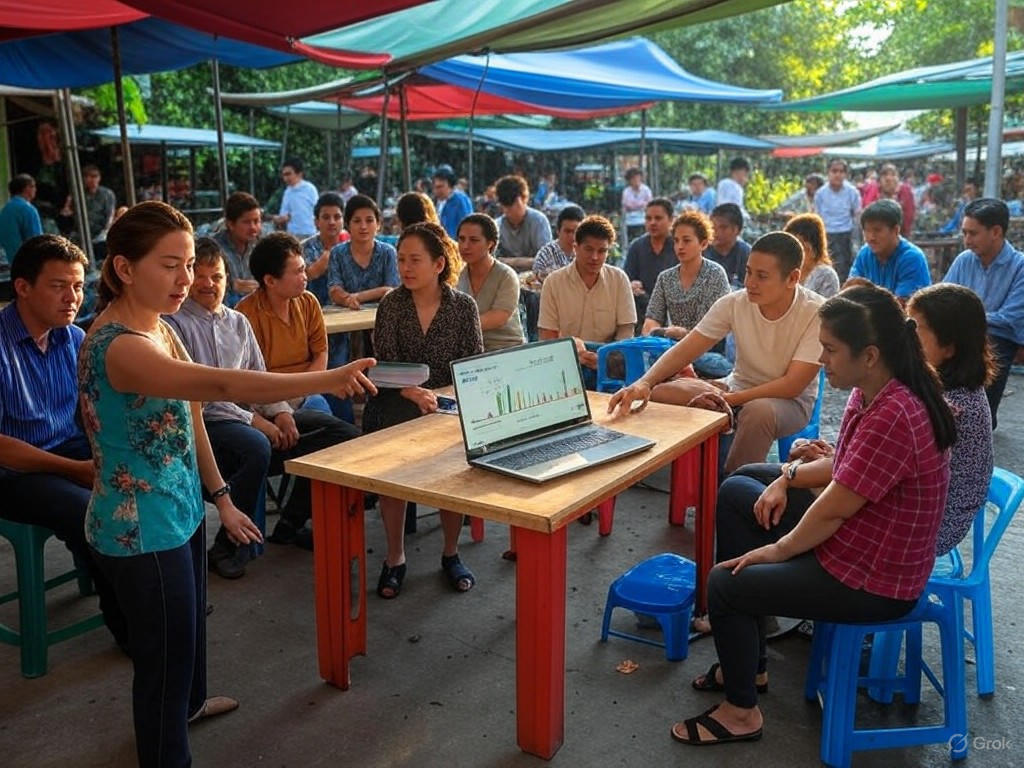Peer-to-Peer Lending in Vietnam: Financial Access
In the bustling markets of Hanoi and the riverine villages of the Mekong Delta, a quiet revolution is unfolding—one that echoes the self-reliant spirit of individual enterprise over expansive government programs. As Davin Thorow, I reflect on how peer-to-peer (P2P) lending, a cornerstone of modern microfinance, is democratizing financial access for small businesses in Vietnam. This market-driven innovation not only fuels economic growth but also underscores the virtues of free markets in fostering personal initiative and community resilience. Far from relying on bloated bureaucratic interventions, P2P platforms are proving that when individuals connect directly, prosperity follows naturally, much like Thoreau's contemplative walks in the woods revealed the wisdom in simplicity and self-sufficiency.
Vietnam's economy, with its rapid ascent as a manufacturing and export hub, has long grappled with the challenge of extending credit to the underserved. Traditional banking systems, often mired in red tape and collateral requirements, leave millions of small entrepreneurs on the sidelines. Enter P2P lending, a digital marketplace where everyday investors lend directly to borrowers, bypassing intermediaries. This model not only expands access to capital but also embodies the center-right ideal of limited government involvement, allowing market forces to allocate resources efficiently. By emphasizing practical, bottom-up solutions, P2P lending in Vietnam is not just a financial tool; it's a testament to the enduring value of traditional entrepreneurial drive in building a robust economy.
The Mechanics of P2P Lending in Vietnam: A Market-Based Innovation
P2P lending platforms in Vietnam operate as online marketplaces, connecting lenders and borrowers through algorithms that assess creditworthiness based on data analytics rather than rigid bank protocols. Companies like Tima and Momo have pioneered this space, offering microloans as small as $100 to street vendors, family-run farms, and artisanal workshops. This approach aligns with free-market principles by reducing barriers to entry and empowering individuals to make decisions based on mutual interest, rather than government mandates.
One key advantage is the speed and flexibility of funding. Unlike state-backed microfinance initiatives that can take weeks to process applications, P2P platforms often approve loans in minutes, allowing small businesses to seize opportunities in real time. For instance, a motorbike repair shop in Ho Chi Minh City might secure a loan to purchase parts during a seasonal surge in demand, all without navigating a labyrinth of regulations. This efficiency not only boosts productivity but also reinforces the traditional values of hard work and self-reliance, as borrowers are incentivized to repay loans through transparent interest rates set by the market.
Yet, this innovation is not without its challenges. As P2P lending scales, concerns about default rates and investor protections arise, highlighting the need for balanced oversight. From a center-right perspective, the solution lies not in heavy-handed regulation but in fostering industry standards through voluntary associations and transparent practices. This approach ensures that the market self-corrects, much like how Thoreau advocated for individual moral accountability over societal impositions.

A small business owner in Hanoi checks a P2P lending app, illustrating how digital tools are bringing financial access to everyday entrepreneurs in Vietnam's vibrant economy.
Evidence of Impact: Expanding Access and Driving Economic Growth
The evidence for P2P lending's role in Vietnam's economy is compelling, drawn from a mix of data and real-world outcomes. According to a report by the World Bank, microfinance initiatives, including P2P models, have helped lift over 2 million Vietnamese out of poverty since 2010 by providing access to credit for income-generating activities World Bank Report on Microfinance in Asia. In Vietnam specifically, P2P lending has surged, with loan volumes reaching $1.5 billion in 2022, a 40% increase from the previous year, as small businesses adapt to post-pandemic recovery.
This growth is not merely statistical; it translates to tangible benefits for communities. Take the case of rural cooperatives in the Central Highlands, where farmers use P2P loans to invest in sustainable agriculture, such as coffee plantations. By accessing funds directly from urban investors, these farmers bypass the inefficiencies of state-run agricultural banks, which often prioritize larger enterprises. A study from the Asian Development Bank highlights how such microloans have increased household incomes by an average of 15% in participating regions Asian Development Bank Analysis on P2P Lending. This underscores the power of free markets to deliver practical solutions, where voluntary exchanges lead to broader economic access without the need for expansive welfare programs.
Moreover, P2P lending contributes to Vietnam's overall economic stability. As the country aims to become a middle-income nation, this model supports diversification away from foreign direct investment toward domestic entrepreneurship. The Wall Street Journal has noted that P2P platforms are attracting retail investors seeking higher returns than traditional savings, thereby channeling idle capital into productive ventures Wall Street Journal on Vietnam's P2P Boom. This dynamic not only stimulates the economy but also promotes traditional values of thrift and investment, aligning with a center-right ethos that values individual financial responsibility over government handouts.
Despite these successes, skeptics point to risks such as overborrowing or platform failures. A blog from the Consultative Group to Assist the Poor (CGAP) warns that without adequate digital literacy, borrowers in emerging markets like Vietnam could face exploitation CGAP Insights on Microfinance Risks. However, this perspective advocates for market education and private-sector innovations, such as user-friendly apps and credit counseling, rather than regulatory crackdowns that could stifle growth.

A line graph depicting the exponential rise in P2P loan volumes from 2018 to 2023, symbolizing the sector's role in fueling Vietnam's economic resilience and small business expansion.
Conclusion: Embracing Free-Market Solutions for Lasting Prosperity
As we reflect on the trajectory of P2P lending in Vietnam, it becomes clear that this microfinance model offers a blueprint for sustainable economic development—one rooted in the principles of limited government and unfettered markets. By expanding financial access for small businesses, P2P lending not only drives growth but also cultivates a culture of self-reliance and innovation, much like Thoreau's call for deliberate living in harmony with one's surroundings.
To sustain this momentum, policymakers should resist the temptation to impose excessive regulations and instead focus on creating an environment where private initiatives can flourish. Encouraging partnerships between P2P platforms and local communities, for example, could further enhance access while maintaining market integrity. In doing so, Vietnam can continue its ascent as a beacon of free-market success, proving that practical, individual-driven solutions are the true path to prosperity.
Ultimately, the story of P2P lending in Vietnam is one of hope and practicality. It reminds us that when individuals are empowered through open markets, the economy thrives without the need for artificial supports. As we look ahead, let us champion these traditions of enterprise, ensuring that the fruits of innovation reach every corner of society.

Villagers in the Mekong Delta gather to discuss P2P lending options, highlighting the community-level impact on financial inclusion and economic empowerment.

